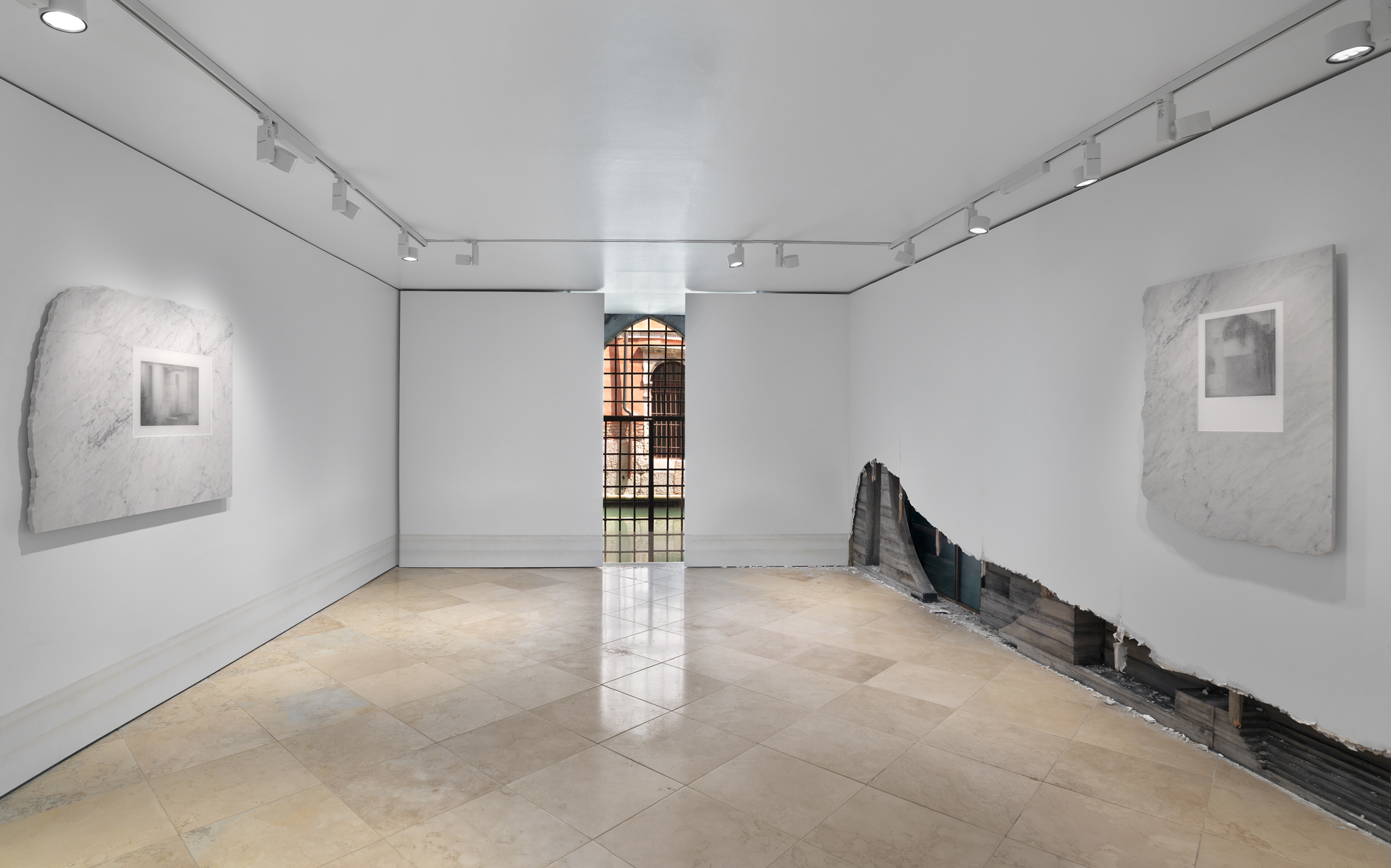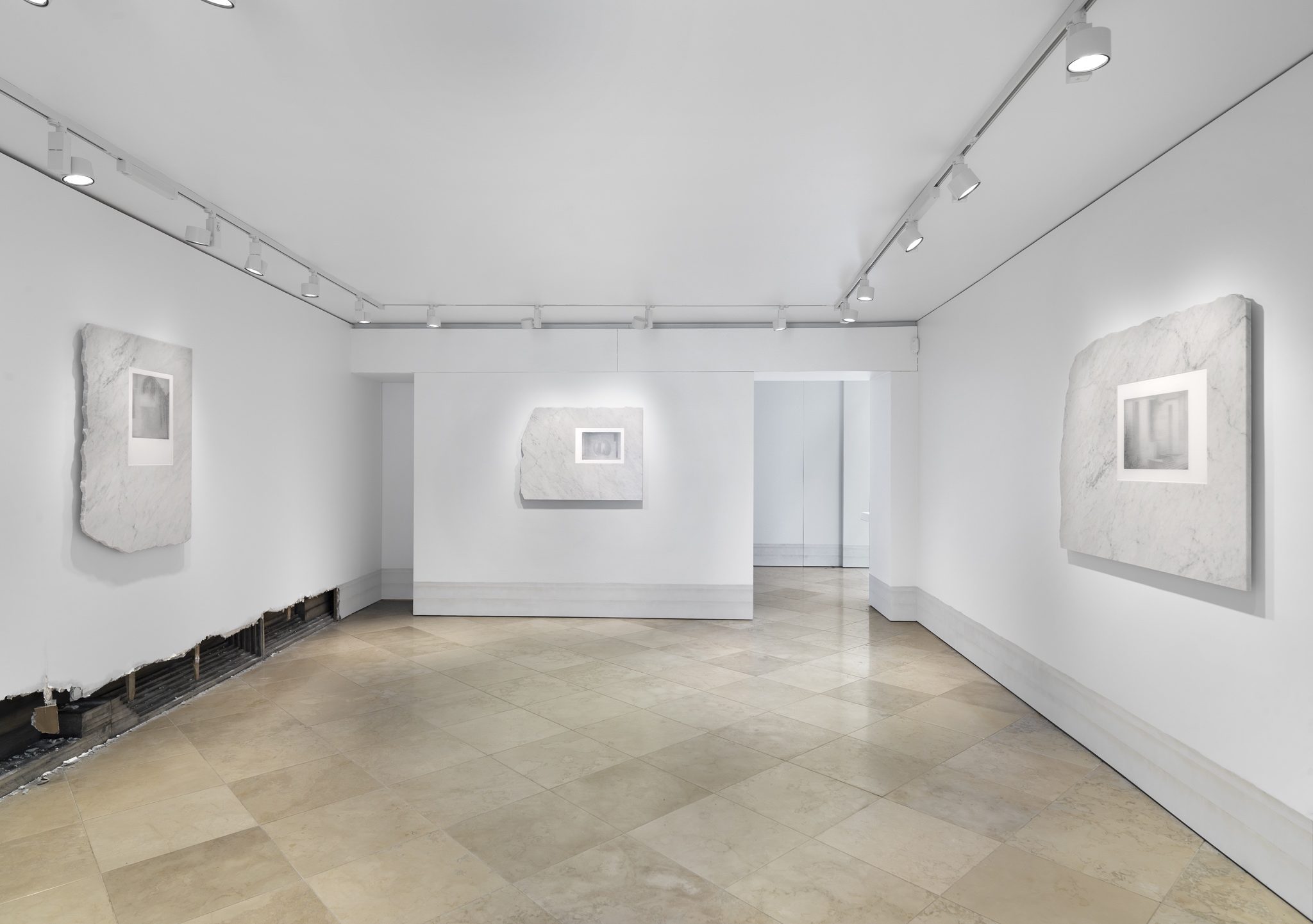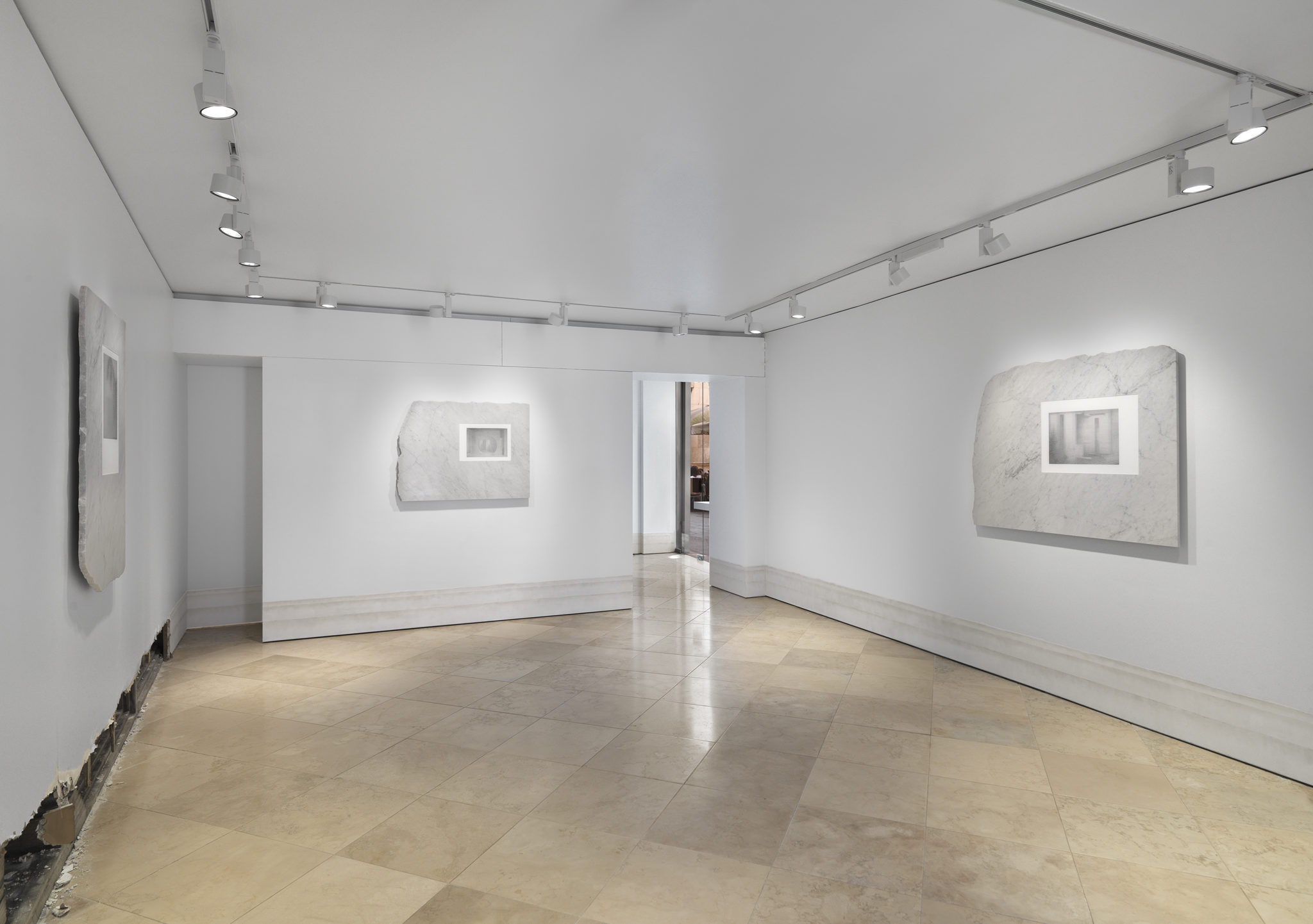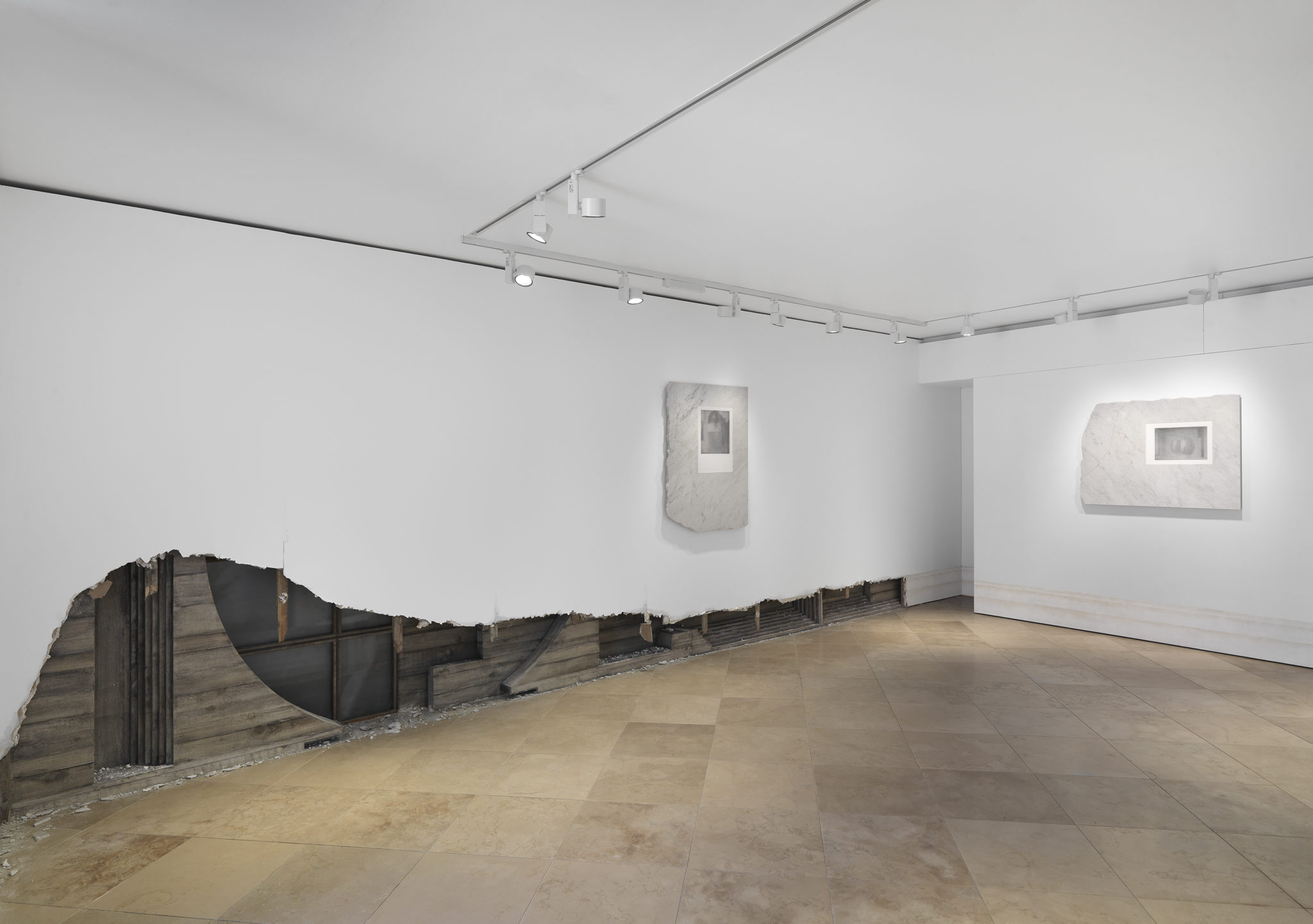Alex Hartley: Closer Than Before
Victoria Miro Venice
22 April–17 June 2023
Tuesday–Saturday: 10am-1pm & 2-6pm
Monday by appointment
The first site-specific installation at Victoria Miro Venice, Closer Than Before features a dynamic architectural intervention that transforms part of the gallery, providing context for new wall-mounted works that continue the artist’s interest in layering, materiality, illusion and how art questions our relationship to time.
Alex Hartley’s work often possesses the quality of a time machine that frees the mind to wander. In his work it is as if we are teleported into the future in order to look back at the present or very recent past. In Closer Than Before this layering of time extends from the works on view to the peeling away of the fabric of the gallery, lent an ecological imperative by an unseen event that asks us to consider what might have occurred and what might be to come. The exhibition takes place during the Biennale Architettura 2023 and was conceived during Hartley’s recent residency with the gallery in Venice.
Accompanying the exhibition is a new essay by Nick Compton, downloadable here.
Alex 1
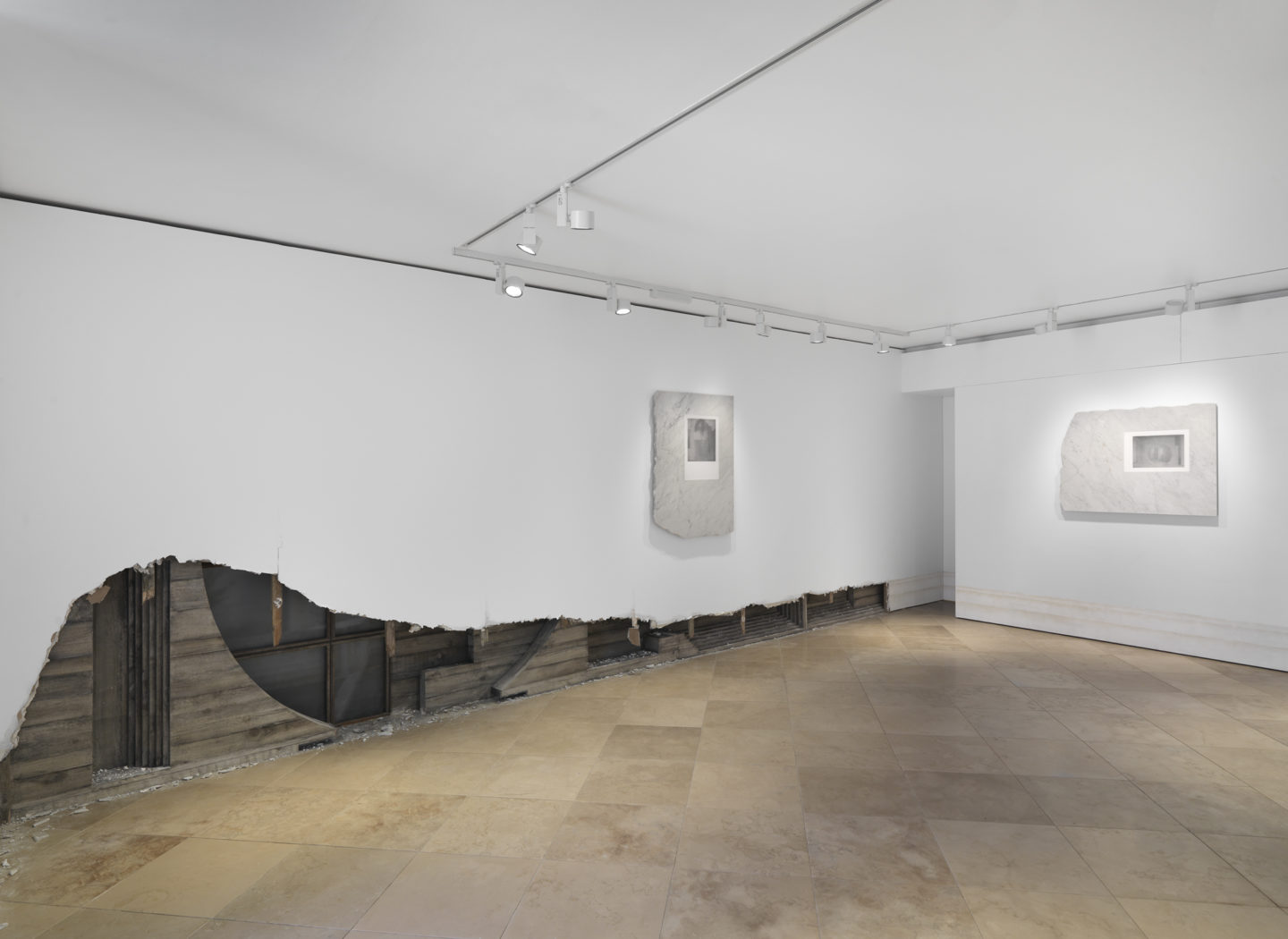
Board formed concrete, timber, plasterboard, steel, glass
Dimensions variable
Alex Hartley, Redoubt, 2023
More infoOne wall has partially crumbled to reveal a space beyond, a realm that exists in an entirely separate architectural register.
Encounters with architecture are grounded by conventions and expectations but Alex Hartley shows us new ways of experiencing and thinking about our constructed surroundings. For the artist a sense of unfolding narrative is key and in this exhibition, where he alludes to the effects of an extreme tidal event, the site of the gallery is turned into a portal to another world or time. On entering the main space, the viewer notices a tideline around the walls. Water has seemingly flooded the gallery then retreated. One wall has partially crumbled to reveal a space beyond, a realm that exists in an entirely separate architectural register. The visual language here – that of board-formed concrete elements including a doorway – is in fact younger than the building itself. It is evocative of the Venice-born modernist architect Carlo Scarpa (1906–1978), whose major projects include Università Iuav, the Garden of Sculptures and the Olivetti showroom in Venice and, widely considered his masterpiece, the Tomba Brion burial ground, located near Treviso. During his residency Hartley spent many hours visiting these places, interrogating and falling under the spell of this remarkable architect, his unique vision and meticulous attention to detail; the only modern architect to have made an impression on the magical city of Venice.
Hartley takes the narrative of fragmentary Scarpa-esque motifs, revealed in an older building by an apparent deluge, to invite us to consider wider notions of layering, containment and revelation.
For Hartley, Scarpa’s iconography, embedded in the ancient city yet standing somewhat apart from it aesthetically, is all the more compelling because of its atmosphere and sense of mystery, one that transcends a rational understanding of geometry or mathematics. Just as many of Scarpa’s projects are interventions within existing historic buildings, Hartley takes the narrative of fragmentary Scarpa-esque motifs, revealed in an older building by an apparent deluge, to invite us to consider wider notions of layering, containment and revelation.
Alex 2
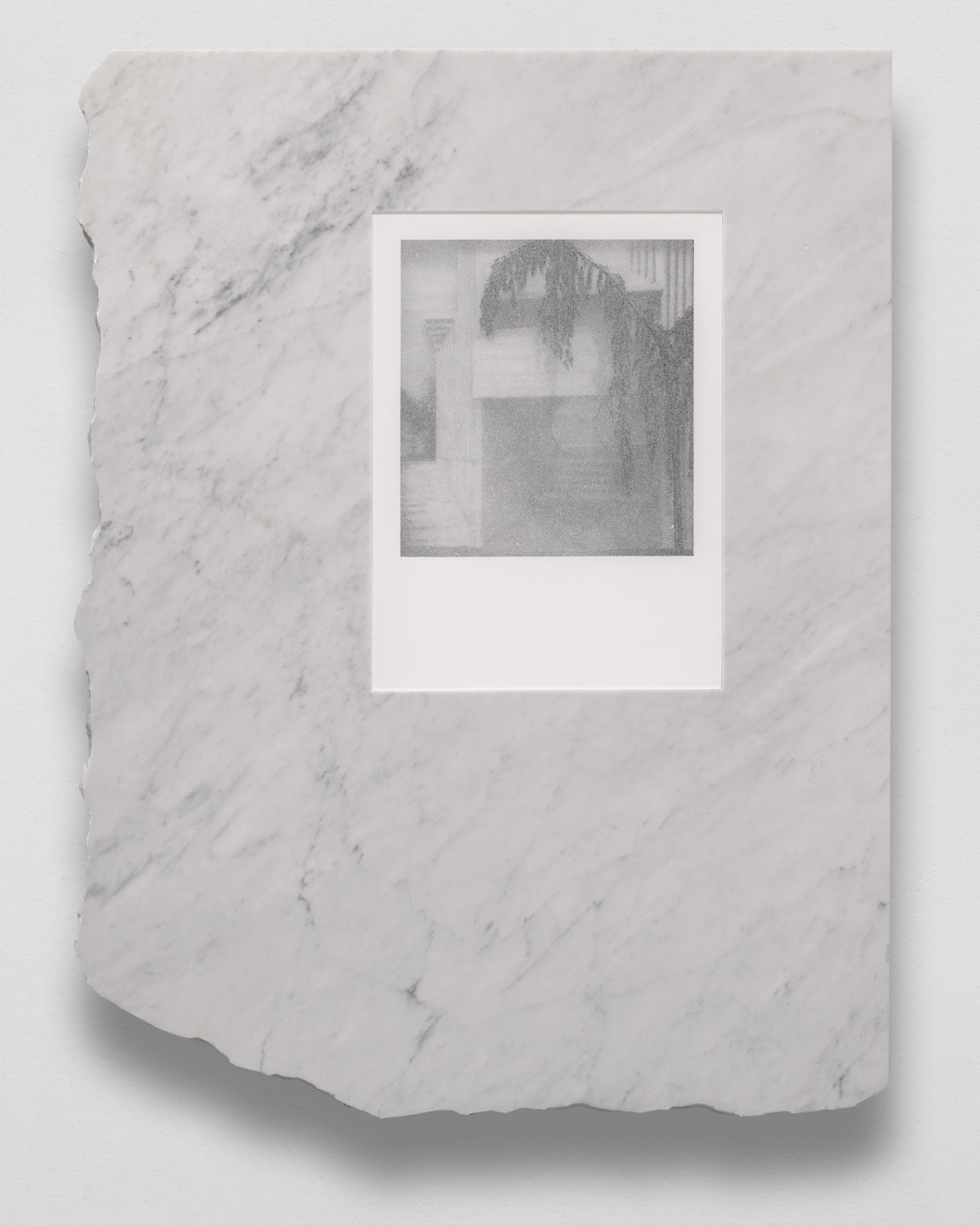
Carrara marble, back painted plexiglass, C-type photograph, aluminium
110 x 84 cm
43 1/4 x 33 1/8 in
Alex Hartley, Seen and Unseen, 2023
More infoWithin each marble slab is a delicate monochromatic painting, overlaying a photographically constructed image which is an evocation of another world.
Accompanying the installation are wall works comprised of luminous Carrara marble slabs, with raw edges left, connecting the slabs back to the mountains from which they were cut. Within each marble slab is a delicate monochromatic painting, overlaying a photographically constructed image which is an evocation of another world; captured shadows and ghost spaces gathered during Hartley’s residency in Venice. Titles – such as Divide and Dissolve and Seen and Unseen – further point to aspects of the tangible and the intangible, and the ways in which Hartley’s work makes porous divisions between what is hidden or revealed over time.
Alex 2a
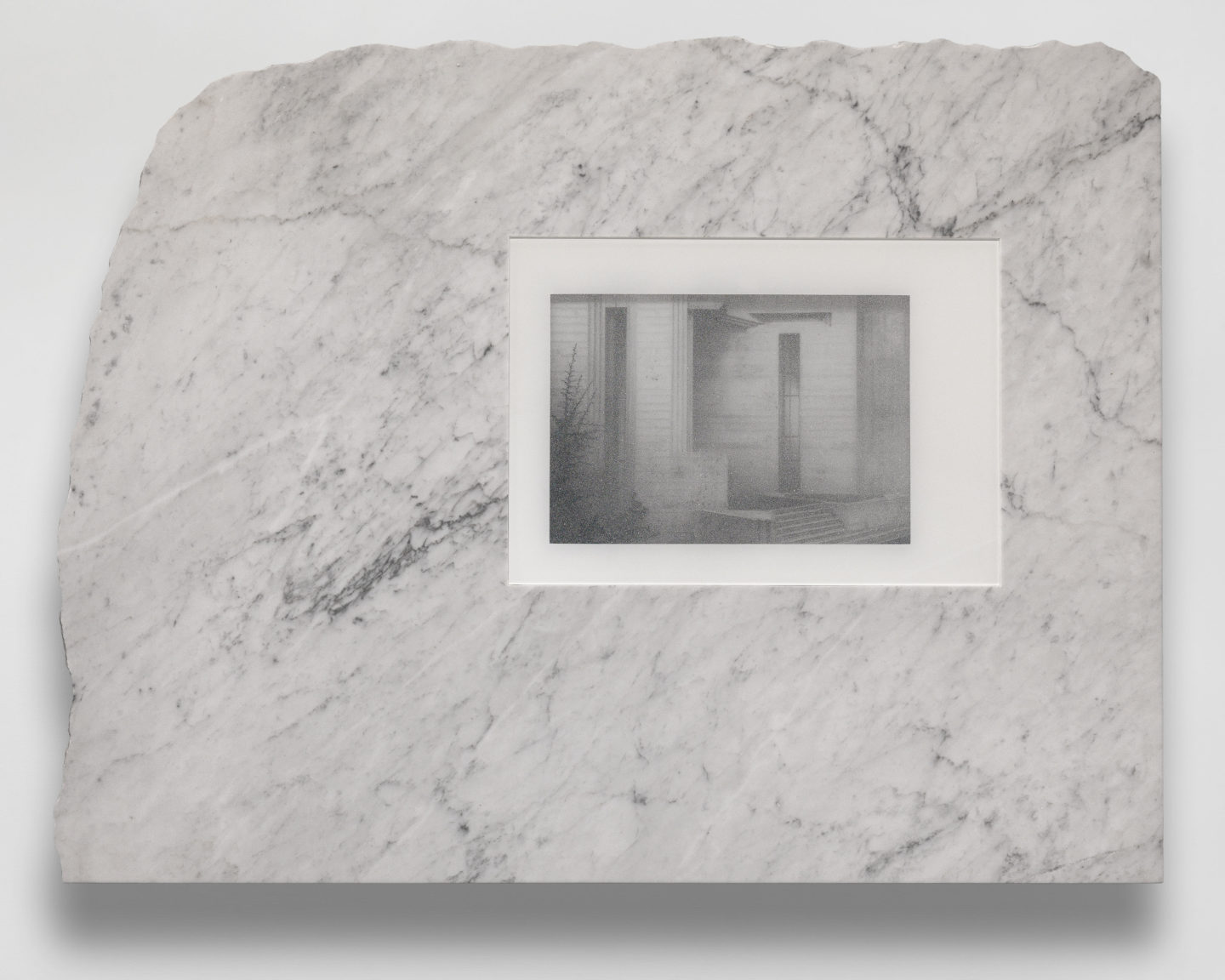
Carrara marble, back painted plexiglass, C-type photograph, aluminium
102.5 x 134 cm
40 3/8 x 52 3/4 in
Alex Hartley, A Frequent Returning, 2023
More info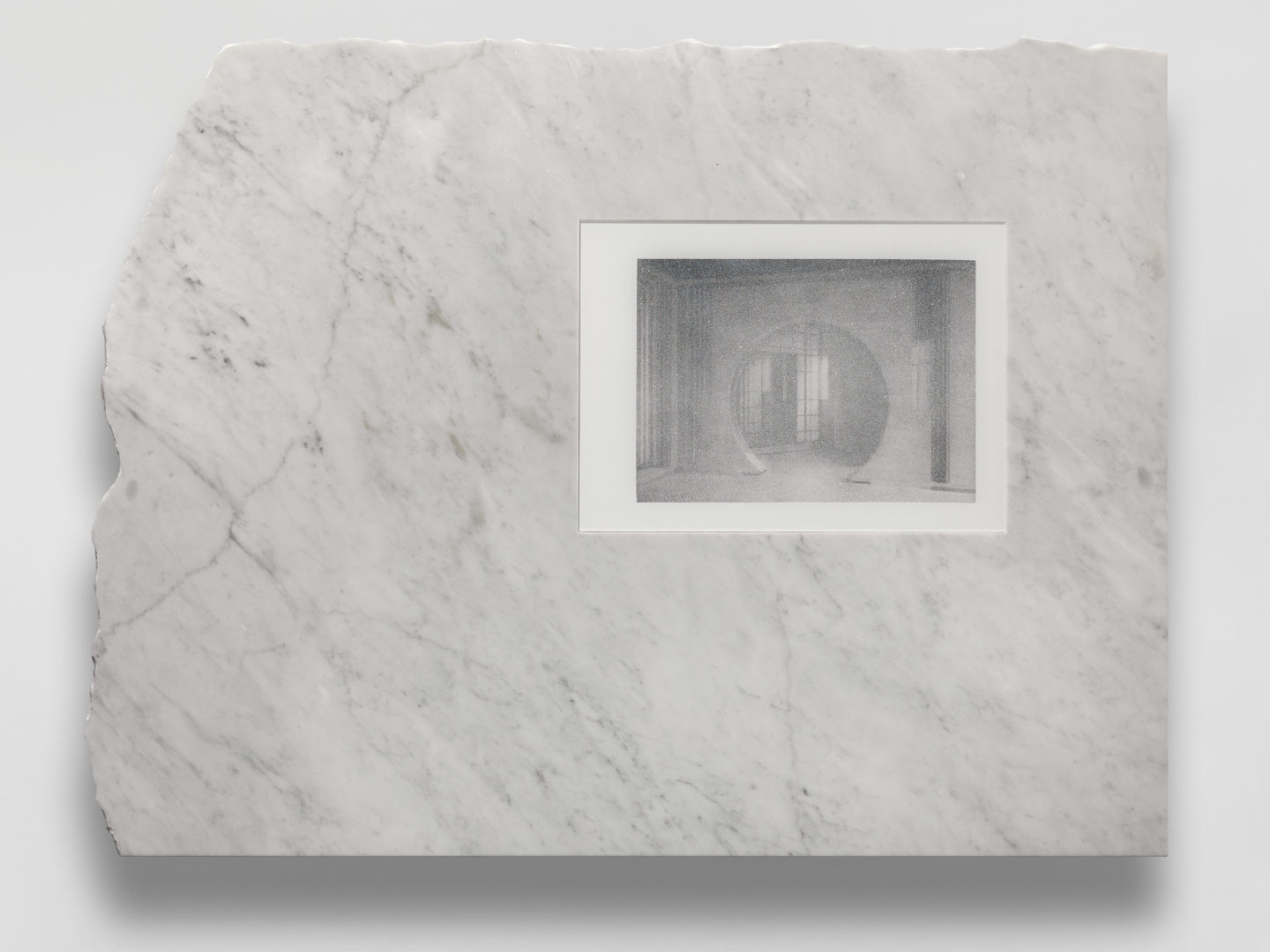
Carrara marble, back painted plexiglass, C-type photograph, aluminium
84 x 110 cm
33 1/8 x 43 1/4 in
Alex Hartley, Divide and Dissolve, 2023
More infoAlex 3
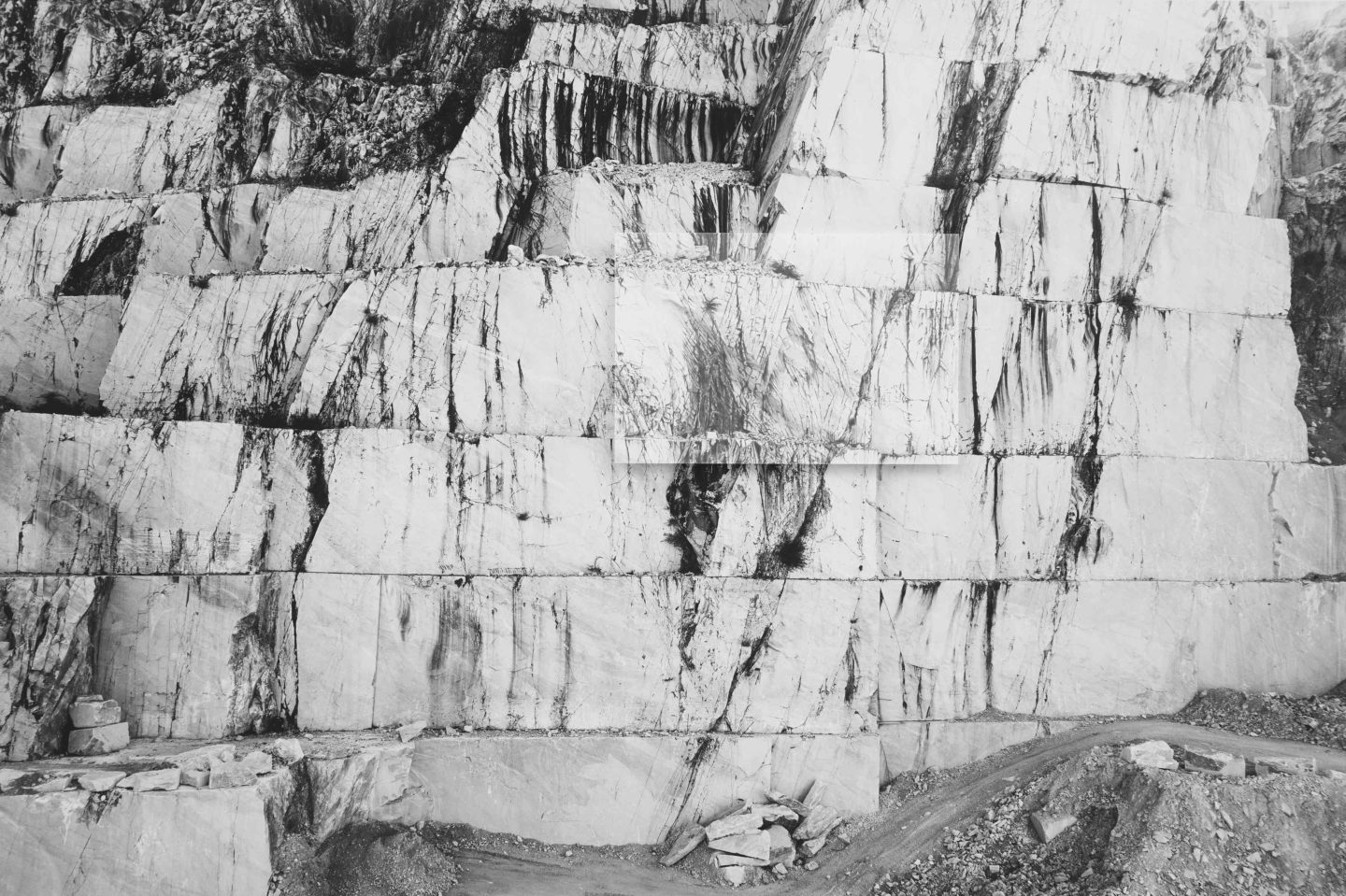
Silver gelatin fibre photographic print on Dibond, pencil and graphite on cartridge paper
101.4 x 146.5 cm
39 7/8 x 57 5/8 in
Alex Hartley, This isn’t the Time, 2023
More infoA meditation on time is again present in the layers of this work – the time it took for Hartley to take the photograph, versus the much slower deep-looking embedded in the making of the drawing.
On first entering the gallery one encounters a work entitled This isn’t the Time. A large photographic image printed on to a textured rag paper depicts a quarry face at Carrara, a place Hartley explored both by day and by night. A rectangular central section of this image has been left blank. Over this void Hartley has floated a pencil drawing that exactly replicates the cut mountain’s intricate pattern of veins and terraces. Hartley examines the distinctions between photography and drawing, making a subtle slippage in the imagery. A meditation on time is again present in the layers of this work – the time it took for Hartley to take the photograph, versus the much slower deep-looking embedded in the making of the drawing. Both methods of representation are folded into the timeline of his geological subject matter.
About the artist
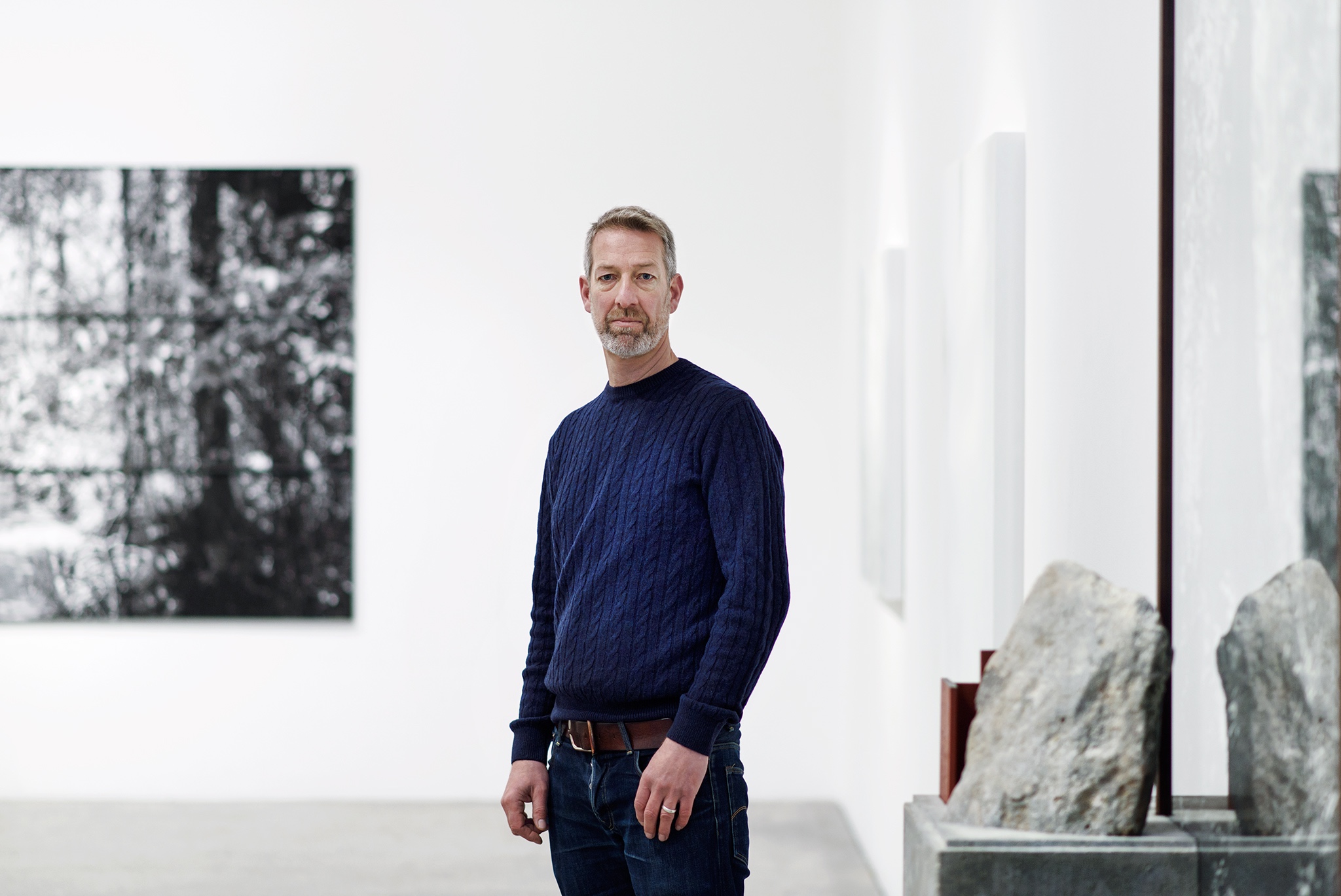
Born in 1963, Alex Hartley has exhibited extensively both nationally and internationally at venues including Watou, Belgium, as part of Watou 2022 (2022); Herbert Art Gallery and Museum, Coventry, UK (2021); KØS Museum for art in public spaces, Koge, Denmark (2019); Witley Court, Worcestershire, UK (2019); Royal Academy of Arts, London, UK (2017); Compton Verney Art Gallery and Park, Warwickshire, UK (2017); Contemporary Arts Centre, Ohio, USA (2014); Louisiana Museum of Modern Art, Denmark (2013); Fundación Canal, Madrid, Spain (2008); and The National Museum of Art, Osaka, Japan (2001).
In 2017, the artist’s work featured in the Yokohama Triennale while in the same year the monumental, site-specific installation, Wall, was on view as part of the Folkestone Triennial. In 2013, Hartley undertook a residency with the National Trust for Scotland. Earlier important projects include Nowhereisland. In 2004, while participating in the Cape Farewell Arctic expedition, Hartley went to the High Arctic searched for and discovered an island that had been revealed from within the melting ice of a retreating glacier. The island was taken out into International Waters where it was declared a new nation. In 2012, this new nation – Nowhereisland – embarked upon a 500-mile journey around the south-west coast of England as part of the Cultural Olympiad.
